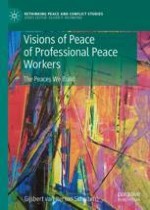2020 | OriginalPaper | Buchkapitel
8. Mindanao: Justice, Harmony and Peace of Mind
verfasst von : Gijsbert M. van Iterson Scholten
Erschienen in: Visions of Peace of Professional Peace Workers
Aktivieren Sie unsere intelligente Suche, um passende Fachinhalte oder Patente zu finden.
Wählen Sie Textabschnitte aus um mit Künstlicher Intelligenz passenden Patente zu finden. powered by
Markieren Sie Textabschnitte, um KI-gestützt weitere passende Inhalte zu finden. powered by
